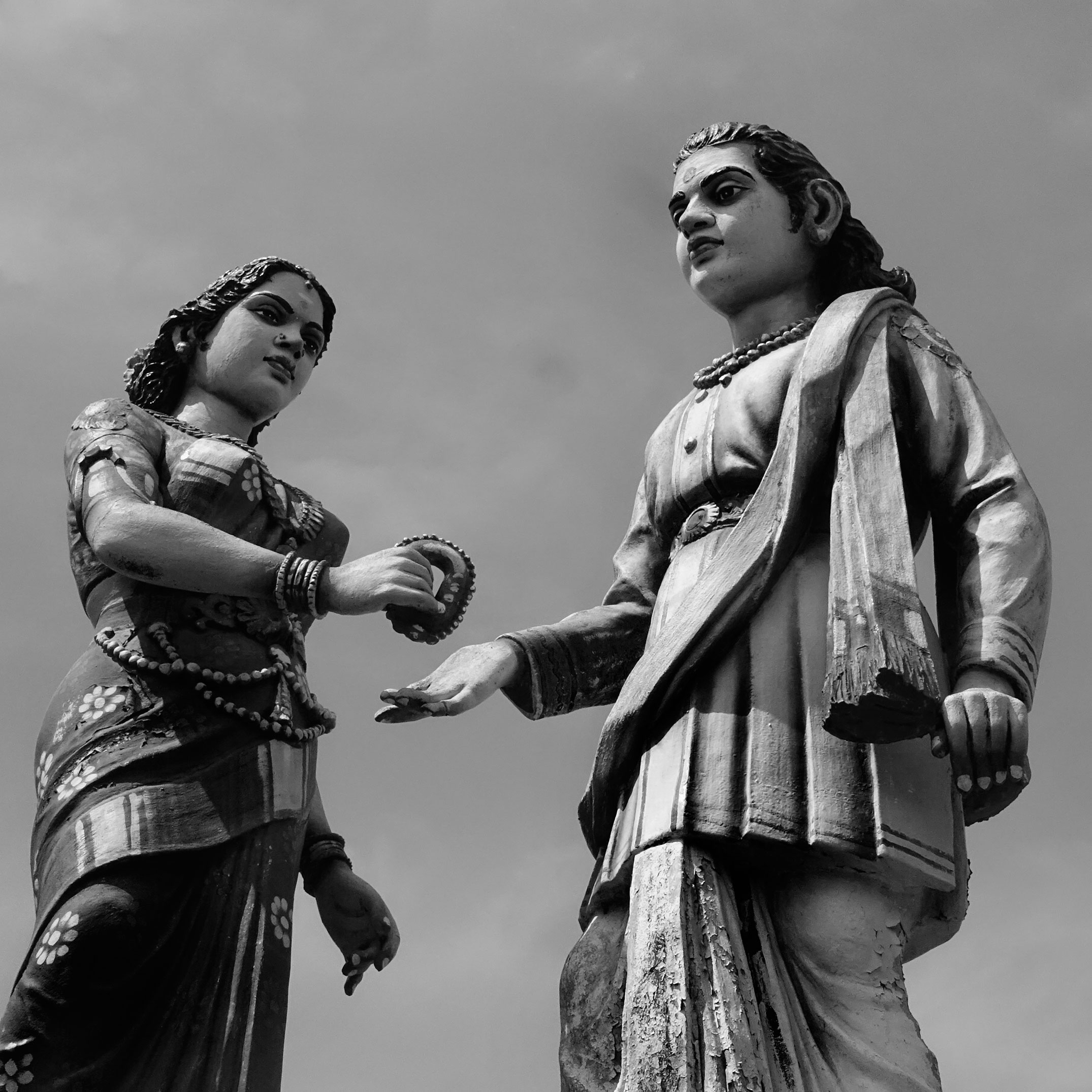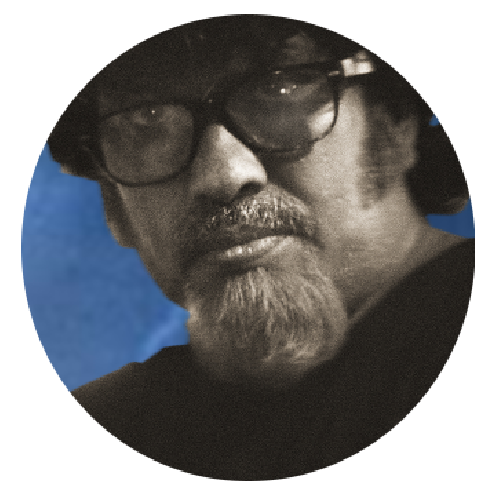Panorama
Metabolism of
Culture
Photo Mail presents
A panoramic view of
The art of photography’s
Interaction and
Interrelation with other
Art mediums such as literature
Architecture, and
Other visual media
A socio-anthropological reading
of Photographer Abul Kalam Azad‘s
Men of Pukar photo-series
which is the third part of his
Ongoing five-part series titled
Story of Love, Desire & Agony
that creates meta-conceptual
parallel visuals of Classical Tamil
epic tragedy Cilappathikaram
In MoC
the author seeks to understand
the origins of “Culture” and
the multi-fold assimilation
and manifestation
Of identity, territory, and gender

Men of Pukar | Story of Love, Desire and Agony © Abul Kalam Azad 2017
“Beloved one! With these anklets as capital
I shall restore our fortune in Maturai;
Dear wife, come with me.” To hear was to obey.
And they left ere Dawn threw his mantle.
– Ilango Adigal, Cilappathikaram
Dance and drama, the earliest forms of performing arts, were essentially based on folklore stories, rituals, collective lores and other local myths which had long existed in the oral form. At a later stage, these stories were compiled as text/poetry with the patronage of the respective rulers/kings. The element of hagiography in these mythical, mythological and cultural stories owed to the potential of the arts and literature as propaganda tools. Theatre, dance, and sculpture are in effect a “movement and/or stillness within a frame” that converges our locus of attention on a pre-defined rectangular arena. When photographed, these ‘works of art’ undergo three other processes: firstly, the three-dimensional experience gets converted to a two dimensional ‘visual’; secondly, the quality of immortality and reproducibility are added to the captured moments, making them part of an image-world that is bound to live beyond us; thirdly, the photographer brings in his/her own unique view, making it an altogether new work of art.
In this photograph of a sculpture taken by Abul Kalam Azad, a graceful lady, dressed in a saree, gives an anklet to an affluent looking man. There appears to be a familiarity between the man and the woman, as the posture of the receiver doesn’t show any sign of humility. The woman is also not exhibiting any sign of upper-handedness. It seems like a casual passing of a trivial object. But, there is something amiss – their eyes don’t meet. They don’t smile at each other. It looks as if both of them are lost in their own world.
Tamil people are familiar with this scene from the classical/Sangam-era epic Cilappathikaram[1]. They are aware of the background of Kannaki, the lady in the pretty saree, and Kovalan, her husband, who is receiving the anklet. The scene depicts a pivotal moment in which the once wealthy and now penniless merchant Kovalan is returning to his wife, after a brief, passionate affair with dancer and courtesan, Matavi. Kannaki is happy to win her husband back. However, Kovalan is guilty and laments over his actions that had led to his misfortune – to which the dutiful wife Kannaki responds by offering her anklet as capital so that they could rebuild their life in Maturai, the capital of the Pantyan dynasty. The interesting epic tragedy has several other twists and turns, and in the end, Kovalan is killed by the Pantyan king, after being mistakenly accused of stealing the Queen’s anklet. Kannaki burns down the kingdom in revenge and ascends to heaven as the “goddess of chastity”.
This information about the man and the woman in the sculpture alters our perception. There is a sudden emotional surcharge, and based on the personal principles and societal standards of his/her surroundings, one’s reaction would vary.
There are temples for Kannaki but, none for Kovalan; to know why it is important to analyze the reason for which this epic was composed by poet Ilango. In those times, that is about 2000-odd years ago, the relationships between men and women were freer and marriages were rare, restricted only to the rulers and chieftains. Both the sexes could take on other partners. Polygamy was openly accepted and practiced as a natural human tendency. It was a period during which the maritime trade was flourishing, which brought in many changes in the socio-economic life of the people. With men having to travel to faraway lands for long periods of time, there was always a tendency to take on partners wherever they traveled.
The rulers saw the need for controlling the people. Especially, the wealthy traders were the target, as their property needed to be properly managed. Or else, it would go outside the community circuit. This period marked the beginning of heredity based transfer of land ownership, for which the number of their ‘heirs’ needed to be closely monitored. One could say that purely for this economic reason as well as to propagate religious morality, poet Ilango, the brother of the Cera King Cenguttuvan, embarked on the journey of writing the epic. Marriage is a sacred pact and union made in heaven, that requires the permission of the parents/elders, and officiating by a priest was advocated. The qualities expected of a woman were clearly specified. New moral standards such as “to hear was to obey” were imposed. For this purpose, superhuman qualities were attributed to the twelve-year-old Kannaki, who was, and is continued to be projected as the iconic symbol of chastity and obedience, conjured by Ilango or probably by an author of a pre-existing folklore fable.
On the other hand, our hero Kovalan was a soft character, a lover of the arts and dance. He is ostracized for breaking his marriage vows and contrived as the epitome of failure and wrongdoing. He is beheaded in the end – even though the cause of which is said to be an altogether different one – thus alerting the common people as to the judgment that awaits the one who does not conform to the societal norms.
It is worth noting here that, during this period, several other texts with similar ‘moral’ values have been in existence all over the world, laying the foundation for the so-called ‘cultured’ society. The connecting waterways and maritime routes facilitated the inter-exchange of knowledge, ideas, and philosophy. All of them had absorbed the prevailing native mother goddess cult worship practices and other local cultural aspects so that it does not sound alien to the commoners. As the agenda was ‘propaganda’, the ‘reality’ is twisted and bent to suit a particular need – questionable information and facts were hidden and the desired messages were carefully spread. Since its composition/compilation which is generally considered to be during the Sangam or post-Sangam period, this doctrine has been presented in the form of dance, theatre, drama, and in modern times, they take the form of cinema, TV serials, etc. What we see today in South India – the rigidity and obsession over matters pertaining to sex and sexuality is indeed a surefire sign of the success of this ancient text in spreading its philosophy amongst the commoners.
Over the period, the epic in itself had gone through a lot of changes, and several layers of addition, deletion, and manipulation shrouds the many illustrative works that are based on the epic. This sculpture is one such illustration, and it contains all the shortcomings of a proclamatory ‘work of art’ that intends to convert people to a certain idea or philosophy. Take the costume, for example. Their clothing is neither as per what the epic describes nor does it reflect the present-day reality. The men and women of those times did not cover their upper body. In fact, being bare-breasted and almost naked was completely accepted and even preferred, especially by the working class. The tropical climate suited their attire or rather a lack of it. Only in later years, especially after the British rule, which apart from political tyranny brought about much social moral conditioning, covering the upper body was linked with purity and privilege according to Victorian morality.
The Nivi-saree style, which was in vogue with the royal families of Andhra Pradesh and Baroda by the early 1900s, is today the most popular and common way to wear a sari. The royal women were the first to bring about radical changes in fashion owing to their contact with different cultures – Arab, Greek, Roman, and Chinese. The single cloth that drapes around the body was introduced in this part of South India. Raja Ravi Varma, the distinguished painter of the 19th century, who had access to the quarters of the rulers and their queens, quickly popularized the style through his paintings of goddesses and royals. Oleographs of his paintings, which were produced in his print studio, found their way into virtually every household in India – and suddenly, Goddesses, mythical Queens, and upper-class women took on a new persona in the public’s imagination. His renderings of sari-clad women with chiffon weave from France over the other types of saris did what centuries of exposure to couture could not – it homogenized fashion across the land. And, it is no coincidence that Ravi Varma was also a Prince. Only a ruler of the land could profess his values, which would then become a rule of that land, and assimilated as part of the culture.
The trend started by Raja Ravi Varma was promulgated through the popular modern medium – cinema and in epical movies, the goddesses wear ‘Saree’. The modern street theatre performance artists also adorn this sort of costume. The concept of an archetypal woman became very much imbibed and came to be revered as ‘tradition’, even though this idea is not even a century old. That is why our sculptor did not choose churidar or salwar-kameez or jeans and a shirt – he is part of the group that has succumbed to the divine authority of Raja Ravi Varma. This should be read alongside the current Indian government’s saying that women of good character choose sari over modern dresses. Directly or indirectly the message is being re-emphasized, an attempt at Paligenetic Ultranationalism – a revival of the mythical “golden age” of a nation is at bay.
Paradoxically, in the Men of Pukar series that has more than 1000 images, this particular image is the only one that could be directly linked with the epic. When a three-dimensional experience is framed into a two dimensional one, there is a reduction of sorts. But, with a thoughtful artist’s touch, there is also an enhancement. In this special angle, both the figures are elevated. The ethereal feel is similar to that of the epic’s dramatic conclusion. Interestingly, there are people in Pukar and elsewhere, who believe that Kannaki was a goddess who walked on Earth. Any deliberations of the hidden agendas of the authors of such epical documents hitherto have lead to frictions and hurting sentiments.
Abul avoids the usual allegorical style and refrains from meddling with the fictitious and righteous aspects of the epic. However, subtly yet strongly he probes questions around ‘myth’ and ‘reality’. While the traditionalists are busy packaging the ‘past’ and delivering it as the ‘present’ norms to be adhered to, in Abul’s images, the fictitious past acts as a mere backdrop, and the contemporary times present themselves as a ‘social reality’ that is fast advancing to newer horizons. Photographic image possesses the quality of permanence and immortality. In all probability, this particular image is bound to be around for a while, silently challenging the accepted norms and perspectives.
_________
[1] Cilappathikaram is one among the five great epic of Tamil Classical Literature. In Tamil Cilambu means anklet and Athikaram mean prose, meaning the story of the anklet. The exact date of composition of the epic is unknown, and it is generally accepted that it was committed to writing during Sangam or Post-Sangam era. The story of the epic is however set in the Sangam period and traverses through the territories of early Ceras, Cholas and Pandyas, the three dominant dynasties of ancient Tamilakam, an area corresponding to present South India. The epic is divided into three cantos, Book of Pukar (capital of Cola dynasty), Book of Maturai (capital of Pantyan dynasty), and Book of Vanchi (capital of Cera dynasty). To most of the South Indians, especially for Tamilians and Malayalees, this classical epic is a familiar one. Poet Ilango is said to have composed or compiled epic Cilappathikaram from pre-existing folklore, during the Sangam-era (3rd century BCE and 3rd century CE), an important period in the history of South India, a time during which its present States, Kerala, Karnataka, Tamil Nadu, Pondicherry, and Andhra Pradesh were united as one socio-cultural unit (Tamilakam). It was a period during which maritime cultural transactions across the silk/spice route were at their peak, and the territories were more fluid and open. The maritime exchanges have left their distinct mark in the lifestyle, culture, language, art, literature, and architecture. Interestingly, the content and style of epic Cilappathikaram are similar to that of Greek tragedies, possibly influenced by the intense exchanges that took place across land and sea. Poet Ilango has synthesized in this epic a description of the triple monarchy of the Tamils [the Ceras, Colas, and the Pantyas], their Historical greatness, their principal cities, the lives of the people of the five regions/strands , and their characteristic, music, song, and dance . Over the period, there have been several readings and critical writings about the epic, by historians, linguistic experts, and sociologists. Some studies have criticized the glorification of the heroine Kannaki and her chastise behavior, the propagation of which had influenced the socio-cultural formation of the South. Even in contemporary times, epic Cilappathikaram and its dramatic story has been recreated as dance/drama performances and cinemas.

Tulsi Swarna Lakshmi is an independent writer and film-maker. She has more than a decade of experience working with leading National and International Non-Government Organisations in India, Africa, and South America. She is the Founder Managing Trustee of Ekalokam Trust for Photography and the Executive Editor of PhotoMail.

Abul Kalam Azad is an established contemporary Indian photographer, noted for his maverick experimental and conceptual works. He is the Founder Chairman of Ekalokam Trust for Photography. Abul’s photographic works are predominantly autobiographical and explore the areas of politics, culture, contemporary micro-history, gender, and eroticism. His works attempt a re-reading of contemporary Indian history – the history in which ordinary people are absent and mainly provided by beautiful images and icons. To see more works of Abul Kalam Azad check his website.
Published on August 13, 2017
Share
Related Articles

Manigramam, Prehistoric Merchant Guild of Tamil Legacy
The existence of Manigramam (Manikkiramam) in Pukar, in this context, is an important surviving evidence of our shared lineage. As literary sources attest, Pukar was one of the gateways through which the Afro-Arabian traders entered Southern India. This simple board points to three thousand and odd years of cultural exchange that happened across borders.

Sacred Thread, Hierarchal hegemony and identity
Controversy surrounds the origin of Brahmin clans, which is divided into ‘gotras’, and as such mutually opposing thoughts and evidences – both scriptural and historical – are put forth by the differing factions. As far as South India is concerned, the Tamil Brahmins and their Vedic ideas started spreading during the period when Buddhism and Jainism was gaining popularity (around 5th century BCE).
Palmyra, Caste system in India
In South India, coconut palm and palmyra tapping was practiced by the indigenous population who, later during the process of class/caste consolidation, were called the Shanars (Channars). These early settlers considered Palmyra as the single most miraculous tree and were the largest consumers of its products. Scaling a Palmyra, which can grow up to 100 feet, is a rather specialized job done by the men.
Parathavar, Etymology of Naval Force
The life of fishermen has a certain rhythm and the timings are in tune with nature – the weather, the water current, the movement and the life cycle of fishes. They all go and return at different times - the modern day ‘nine to five routine’ is not applicable here. For example, the crab catchers usually go during the late evening to spread their nets. They would go back again in the early morning to collect their catch.
Cauvery, River Valley Civlisation
River Cauvery - the lifeline of South India – that traverses through all the four states and Puducherry Union territory is personified as a goddess/woman. Several rituals, along her course, have been practiced since pre-historic times. The most important amongst them are the ones conducted at the mouth where the river merges with the infinite ocean – the end of a journey often analogized with the journey of a human life.




